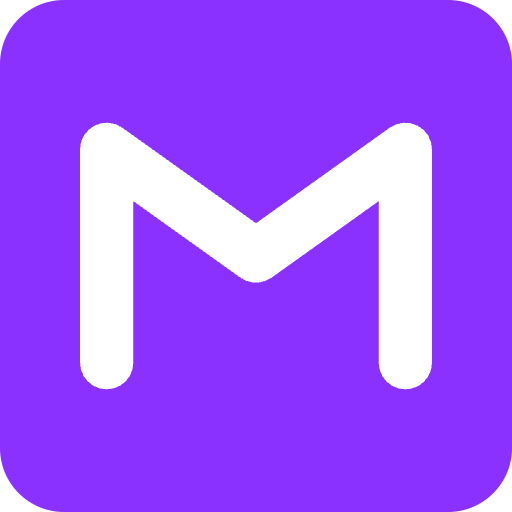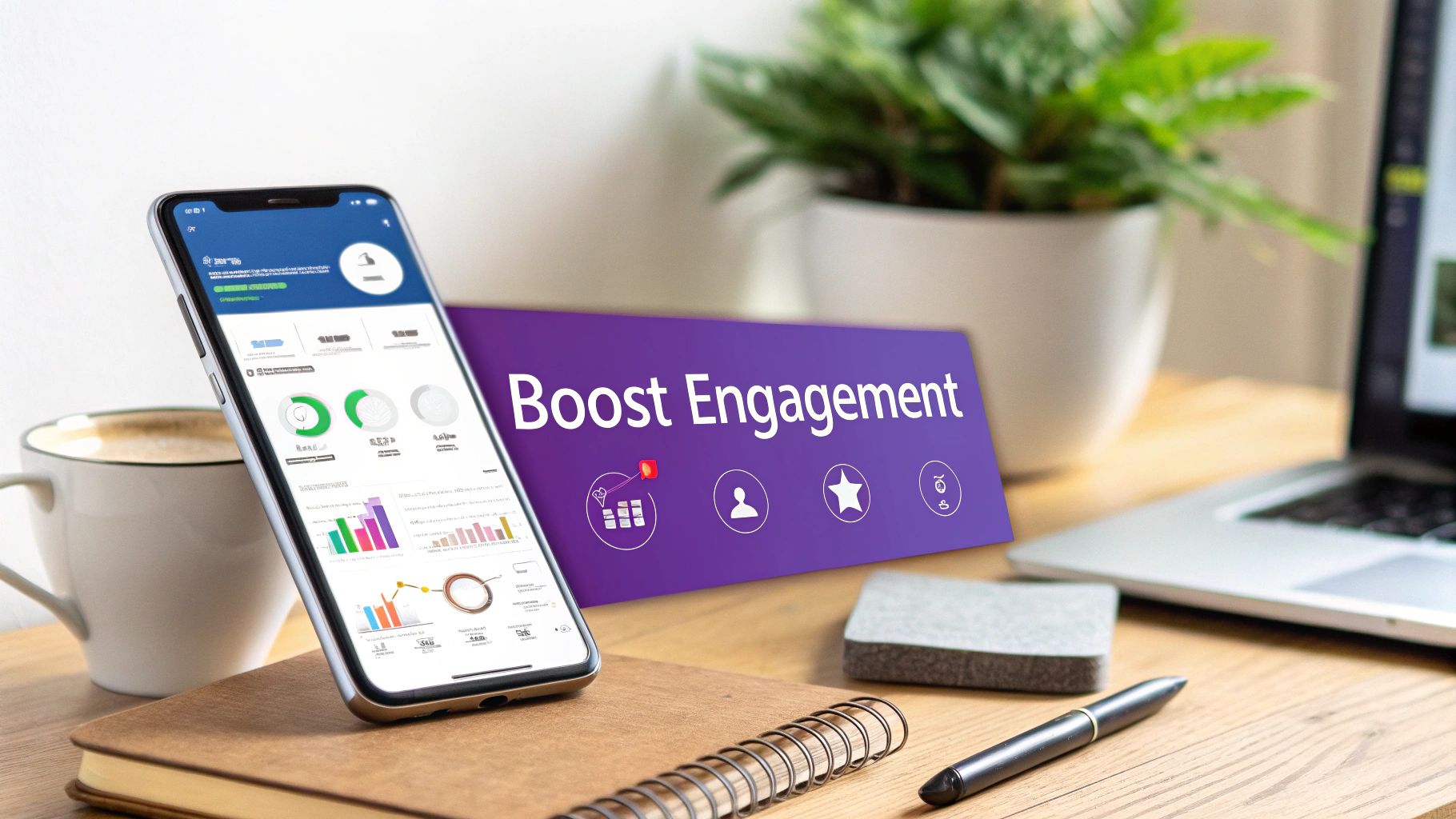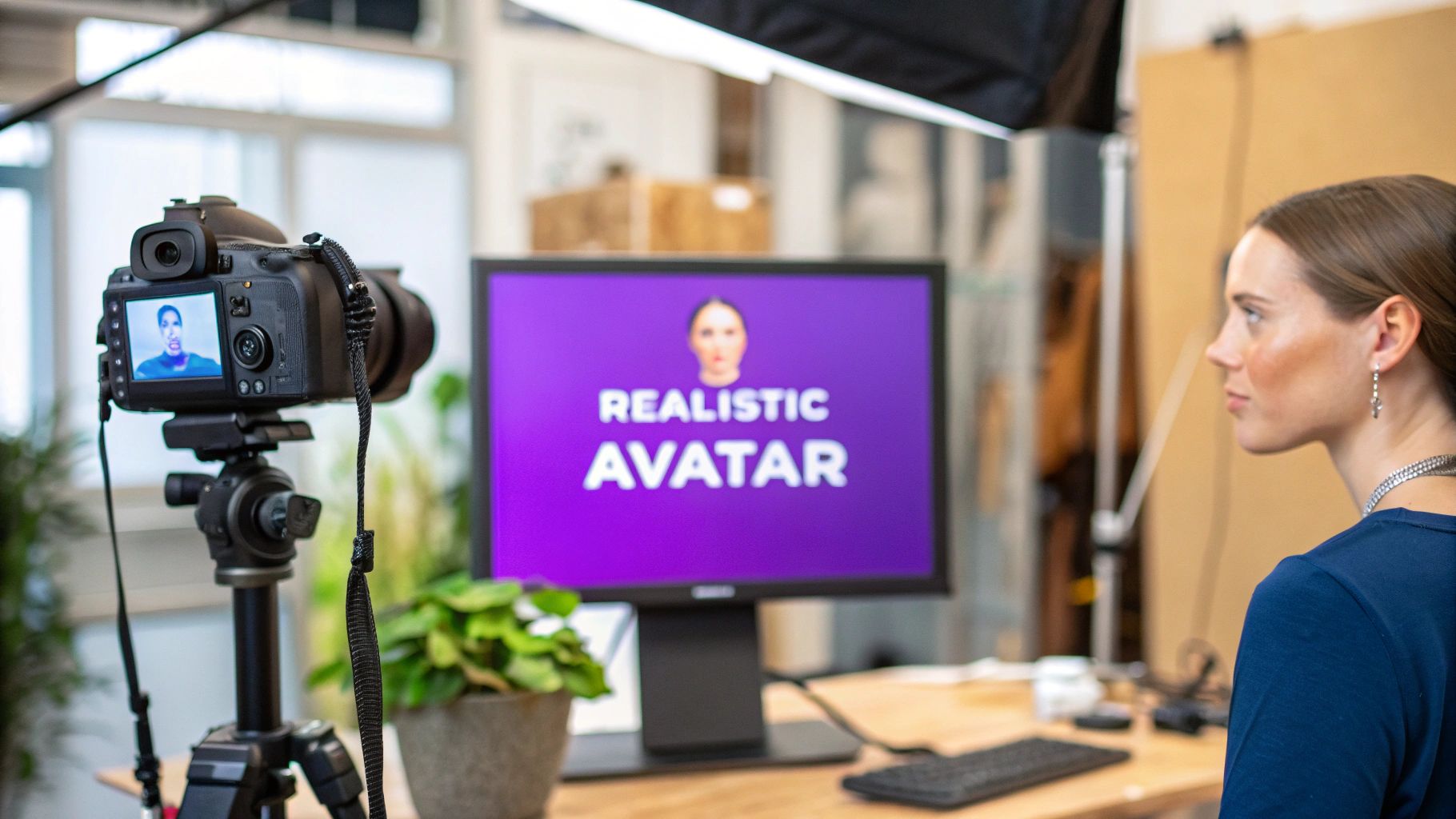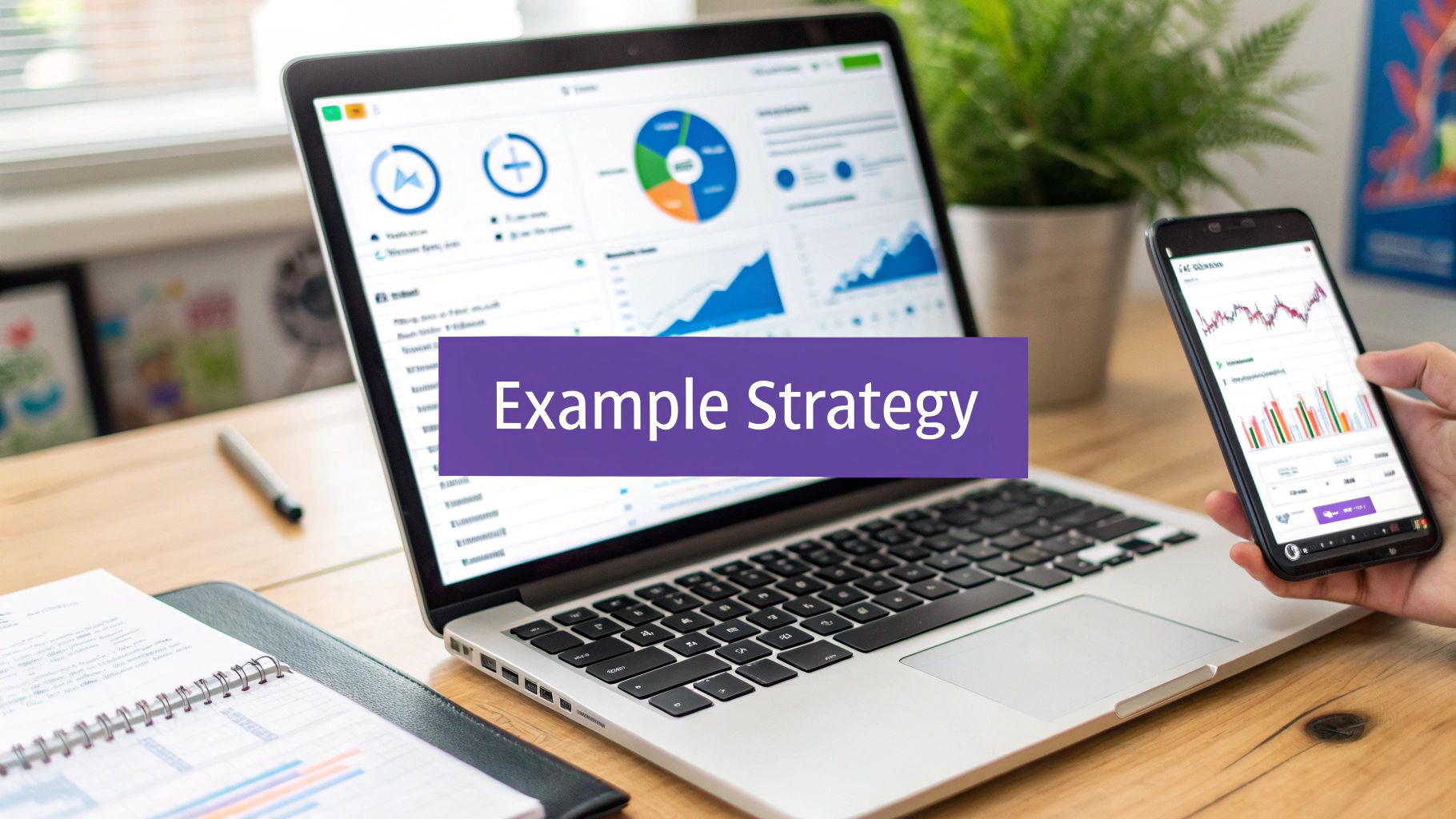How to Create Engaging Content That Converts

Let's be honest, the old rules of content creation are dead. Pushing out endless blog posts and just hoping for traffic? That’s a surefire way to get ignored. If you want to create truly engaging content today, you have to forge a real connection. That means solving actual problems, telling compelling visual stories, and being relentlessly authentic.
It’s less about just publishing and more about crafting experiences that hit home on a personal level.
The New Rules for Creating Engaging Content

The game has completely changed. Modern audiences are smart; they crave genuine value and content that feels like it was made just for them. This requires a fundamental shift in thinking—from being a marketer to becoming a creator.
A creator's first job is to serve their audience with empathy. This goes way beyond surface-level demographics. You need to understand their deepest frustrations, their nagging questions, and what they truly aspire to achieve. When your content reflects their own world back at them, it becomes magnetic.
This principle is universal. It works everywhere, from your blog to your social channels. In fact, our own guide to social media branding digs into how a consistent, authentic voice is the secret to building a fiercely loyal community.
The Power of Personal Relevance
The data backs this up. Personalization isn't just a buzzword; it's everything. A staggering 87% of consumers say content that speaks to their personal interests is a major factor in whether they engage or not. When you get this right, the payoff is huge.
This is exactly where authenticity becomes your most powerful tool. People don't connect with polished corporate-speak. They connect with real stories, transparency, and the genuine article.
The most engaging content doesn't just inform; it validates the reader's experience. It says, "I see you, I understand your problem, and I'm here to help." This empathetic approach is the foundation of trust and long-term loyalty.
To get a handle on creating content that truly connects, it helps to understand the core elements that make it work. These are the fundamentals that turn a simple article or post into a memorable experience for your audience.
Core Pillars of Engaging Content
| Pillar | Key Principle | Practical Application |
|---|---|---|
| Problem-Solving | Address a specific pain point. | Instead of "Tips for Marketing," write "How to Get Your First 100 Customers with a $0 Budget." |
| Authenticity | Be transparent and genuine. | Share behind-the-scenes stories, admit to failures, and write in your natural voice. |
| Visual Storytelling | Use visuals to enhance understanding. | Add custom graphics, screenshots, or short videos to break up text and clarify complex ideas. |
| Personal Relevance | Make the reader feel seen. | Use "you" and "your" to speak directly to the audience. Reference common industry challenges. |
By building your content around these pillars, you create a foundation that not only attracts readers but also keeps them coming back for more.
Beyond Words to Visuals
The new rules also demand a heavy emphasis on visual storytelling. Let's face it, a massive wall of text is a turn-off, no matter how brilliant the writing is. Visuals are essential for breaking up information, boosting comprehension, and making your content far more shareable.
This isn't just about dropping in a stock photo here and there. It means being strategic with:
- High-quality images that evoke an emotional response or clarify a concept.
- Custom graphics and infographics that make complex data easy to digest.
- Embedded videos that offer a dynamic and more personal way to connect and teach.
Of course, mastering these new rules requires a solid grasp of how to write for impact. Great content is more than just good ideas; it's about structure, flow, and smart optimization. To brush up on the fundamentals, check out this excellent guide on how to write a good blog post that ranks and converts.
When you combine empathetic storytelling with sharp formatting, you're setting the stage for success.
Uncovering Insights with Audience-Centric Research
Great content—the kind that feels indispensable and truly personal—doesn't start with a blank page. It starts long before you write a single word. It begins with digging deep into your audience's world, moving beyond generic personas to find real, human insights. Your mission is to uncover the exact language, questions, and frustrations your audience uses every single day.
This isn't just research; it's an exercise in empathy. Instead of guessing what your audience wants, you learn to listen to what they're already saying. This is how you find the emotional triggers that make your content connect on a much deeper level.
Mine The Gold In Online Communities
Where do people go to ask unfiltered questions and share their honest-to-goodness opinions? Online communities. Places like Reddit are absolute treasure troves of raw, candid conversations on just about any niche topic you can imagine.
For example, a startup founder could easily jump into subreddits like r/startups or r/smallbusiness and find post after post of people venting about their content marketing struggles. This is where you find the unvarnished truth, straight from the source.
This screenshot captures a perfect example of a typical Reddit conversation—it's packed with authentic questions and genuine, community-driven answers.
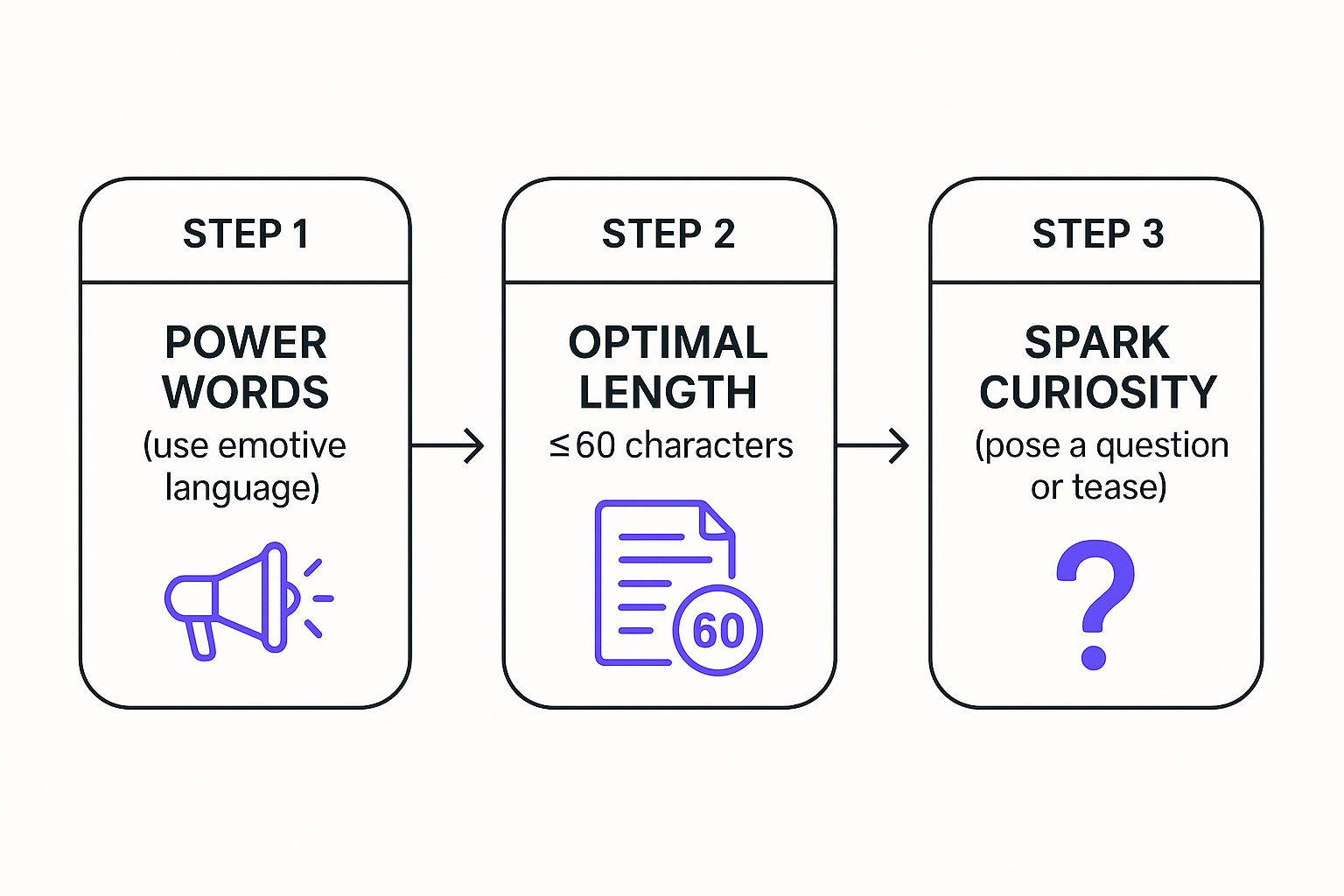
By just observing these discussions, you can pinpoint the precise vocabulary and pain points to tackle in your own content. It's like getting a cheat sheet for what your audience actually cares about.
To really get to the core of what makes your audience tick, it helps to explore various essential user research methods that go beyond surface-level analytics. This will give you a much broader toolkit for truly understanding the people you want to reach.
Map The Customer Journey
Getting to know your audience also means understanding their journey. What are the key stages they move through when trying to solve a problem that your product or service addresses?
This is more than just a sales funnel. It's about their emotional and informational needs at each and every step.
- Awareness: They know they have a problem, but they're not quite sure what the solution is. Your content here should focus on defining that problem and building trust.
- Consideration: They’re actively researching different solutions. This is where your content can shine by comparing options and showcasing what makes you unique.
- Decision: They're on the verge of making a choice. Things like case studies, testimonials, and detailed guides can give them the confidence they need to commit.
Our guide on content marketing for startups dives deeper into how mapping this journey helps new businesses focus their limited resources for maximum impact. It’s a game-changer when you're just starting out.
The real secret to engaging content is making your audience feel seen and understood. When you start using their words and solving their specific problems, you stop being just another brand and become a trusted guide. That’s a connection marketing slogans can never buy.
Crafting Content with Compelling Stories and Visuals
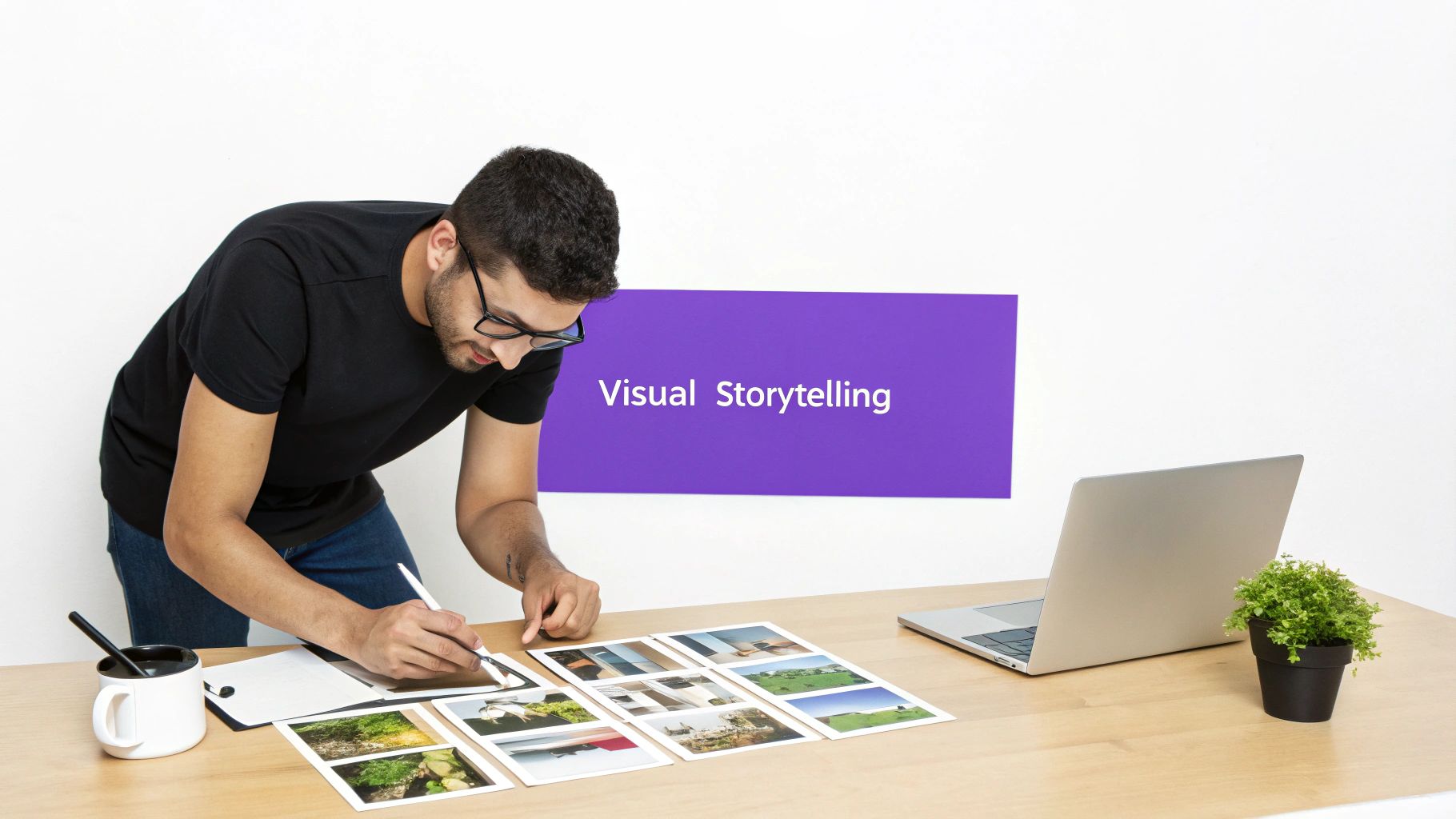
Once you've done the hard work of understanding your audience, the real fun begins. This is where you move beyond raw data and bullet points to create something that actually connects with people. The best content doesn't just present facts; it weaves them into a story that grabs your reader and doesn't let go.
I like to think of every piece of content, whether it's a blog post or a short video, as a mini-movie. You need a strong hook to pull people in, rising action that builds value by addressing their real-world problems, and a solid conclusion that leaves them feeling like they learned something valuable.
For example, you could write a dry article titled "Features of Our New Software." Or, you could frame it as, "How One Founder Saved 10 Hours a Week with This Simple Tool." Which one are you more likely to click? The second one hooks you with a character, a conflict, and the promise of a resolution. It’s a classic, and it works.
Weave a Narrative That Resonates
One of the most reliable ways I've found to make content stick is by grounding it in relatable scenarios. We're all wired to respond to stories. A good narrative can make a complex topic feel personal, memorable, and much less intimidating.
A simple but incredibly effective story arc to follow is:
- The Problem: Kick things off by hitting on a pain point your audience knows all too well.
- The Journey: Walk them through the struggle—the failed attempts and the frustrating search for a fix. This builds empathy and shows you get it.
- The Solution: This is the turning point. Introduce the strategy, tool, or insight that finally changes the game.
- The Transformation: Wrap up by showcasing the positive outcome, painting a picture of the new reality made possible by your solution.
This approach transforms your content from merely informational to truly inspirational. Of course, telling great stories takes time, which is why I'm always looking for ways to work smarter. For instance, you can boost your content creation productivity with speech-to-text, which frees you up to focus more on the creative side of things.
Amplify Your Story with Visuals
Let's be honest, in today's visually saturated world, words alone often aren't enough to hold attention. Visuals are absolutely essential for breaking up text, making complex ideas easier to grasp, and driving an emotional connection. It’s no surprise that articles with relevant images get 94% more views than those without.
Visuals aren't just here to look pretty; they're powerful communication tools. A striking image, a clear infographic, or a quick video can often say more than a few paragraphs of text ever could.
Instead of just slapping in a generic stock photo, try to create a more dynamic experience. I've found that custom graphics, annotated screenshots, and short, embedded videos can take a piece of content from good to great. If you need some fresh ideas, check out these social media content ideas that do a brilliant job of blending text and visuals to get people talking.
Just remember, every visual should have a job to do—whether that's to clarify a point, spark an emotion, or simply give the reader's eyes a break. Using visuals strategically is a huge part of creating content that not only captures attention but actually holds it.
Building Trust Through Authentic Creator Marketing
In a world saturated with ads, authenticity isn't just a buzzword—it's your most valuable currency. And honestly, no one delivers it better than creators. If you want to move beyond the noise of traditional advertising, you have to start thinking about genuine partnerships as the new cornerstone of engagement.
This isn't about paying for a few sponsored posts or running transactional, one-and-done campaigns. Real creator marketing is about building long-term relationships with people whose values and audience genuinely line up with your brand. The real magic happens when you co-create content that feels natural because it’s built on the creator’s unique voice and the trusted bond they have with their community.
The Power of Partnering with Creators
When you find the right creator, you're not just buying reach; you're borrowing trust. Their audience sees them as a friend or a reliable expert, so when they talk about a product, it lands like a recommendation from someone they know, not a pitch from a faceless corporation. That’s the kind of genuine endorsement most brands can only dream of replicating.
The numbers don't lie. Investment in the creator economy is exploding, with spending projected to jump by 143% in the four years leading up to 2025. We're seeing big companies dedicate massive budgets to this, with average annual spending now topping $1.7 million. This massive shift makes one thing clear: brands are turning to creators for content that feels real. You can dig into more stats on the growth of creator marketing investments.
From Transaction to Partnership
The real unlock is shifting your mindset from seeing creators as a line item to seeing them as true partners. This means giving them the creative freedom to weave your brand into their content in a way that makes sense for their audience. When you empower them to do what they do best, the content isn't just more authentic—it's a hell of a lot more engaging.
Getting this right requires a different approach:
- Focus on Alignment: Don't just chase big follower counts. Prioritize creators whose personal brand and audience are a perfect match, even if their community is smaller and more niche.
- Emphasize Co-Creation: Ditch the strict creative briefs. Work with them on content ideas. Let their expertise on what resonates with their audience guide the creative process.
- Think Long-Term: One-off campaigns are fleeting. Build lasting relationships. Consistent collaboration reinforces trust and makes the partnership feel more genuine and impactful over time.
By collaborating with creators, you're not just reaching a new audience; you're becoming part of a community. This is how you move from being a faceless brand to a trusted voice in your industry.
This strategy of building trust and authority through others directly mirrors the principles you need to become a thought leader in your space. At the end of the day, both are about delivering genuine value and building real connections.
Maximizing Reach with Smart Distribution
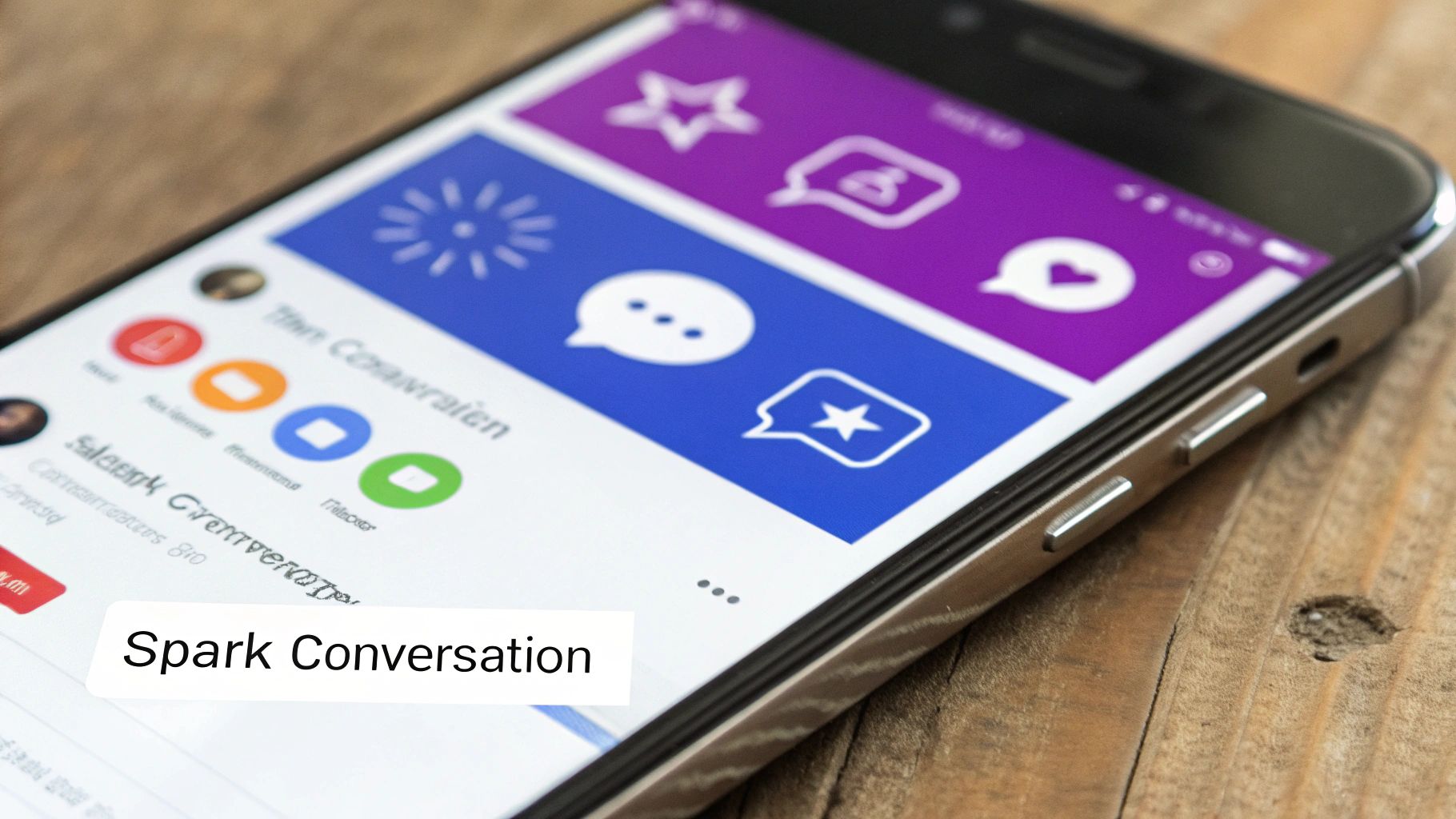
Creating a brilliant, story-driven piece of content is a huge win, but let's be honest—it's only half the battle. If your masterpiece just sits there, it can't inform, inspire, or convert anyone. This is where a smart, proactive distribution strategy comes in. It’s the engine that gets your message in front of the people who actually need to hear it.
I like to think of it this way: your big, core piece of content—like a detailed blog post—is the sun. Your distribution efforts are the planets, each reflecting that light in its own unique way across the solar system of the internet. This isn't just about spamming a link everywhere. It’s about strategically adapting your core message for different platforms and the unique cultures of their audiences.
Of course, this all starts with solid on-page SEO so your content is discoverable. But real reach? That comes from actively, and systematically, promoting your work long after you hit publish.
Build a Content Repurposing Engine
One of the most powerful distribution tactics I've seen is content repurposing. It’s the art of taking one substantial piece of content and slicing it into smaller, platform-native assets. You're working smarter, not harder, to maximize the return on all that effort you put into the original piece.
A single, well-researched blog post can be a goldmine. For instance, a 2,000-word guide can be transformed into a dozen different pieces of micro-content.
- A Twitter (X) Thread: Break down the main takeaways into a series of concise, punchy tweets.
- An Instagram Carousel: Turn key statistics or actionable steps into visually appealing, swipeable slides.
- A LinkedIn Article: Post a condensed version that zeroes in on the professional or business implications.
- A Short-Form Video Script: Outline a 60-second TikTok or Reel that summarizes the core problem and solution.
- An Email Newsletter: Share the single most valuable insight with your subscribers, driving them back to the full post.
This approach ensures you’re meeting your audience where they already hang out, in a format they actually enjoy consuming.
Go Where the People Are
Speaking of meeting your audience, social media is the undisputed champion of modern engagement. It's a massive opportunity you just can't afford to ignore, with an estimated 5.42 billion global users and the average person using nearly seven different social networks each month. This is exactly why advertisers are projected to pour $276.7 billion into social ads. Your content needs to be part of that conversation.
The goal of distribution isn’t just to get clicks. It’s to start conversations on the platforms your audience already loves and trusts. Tailoring your message to each channel shows you understand the culture of that platform.
To get the most out of these channels, you have to adapt. A formal, data-heavy tone might kill it on LinkedIn, but that same post would likely fall completely flat on Instagram or TikTok. Your ability to create truly engaging content hinges on understanding these unwritten rules. For a deeper look, our guide can help you boost your social media engagement by tailoring content for each platform.
Create Your Distribution Checklist
To make this entire process repeatable and scalable, you need a system. I highly recommend building a simple distribution checklist you can pull up for every new piece of content you create. This takes the guesswork out of the equation and ensures you’re consistently getting the most mileage out of your work.
Your checklist could look something like this:
| Channel | Action Item | Notes |
|---|---|---|
| Email List | Send dedicated email broadcast | A/B test a couple of subject lines for the best open rate. |
| Post a summary with a key insight | Make sure to tag any relevant influencers or companies mentioned. | |
| Twitter (X) | Schedule a 5-tweet thread | Use a few relevant hashtags and always include a graphic. |
| Relevant Forums | Share in relevant discussions | Find a Reddit or Quora thread where your content actually solves a problem. |
By developing a system like this, you turn distribution from a nagging chore into a powerful growth lever, making sure every single piece of content you create delivers a significant return.
Got Questions About Engaging Content? Let's Clear Them Up.
Even with the best strategy laid out, you're going to hit some snags when you're in the trenches creating content. It's one thing to know the theory, but it’s a whole different ball game when you’re trying to apply it day in and day out.
Let’s tackle some of the real-world questions that pop up all the time in creator communities and forums. These aren't just hypotheticals—they're the roadblocks I see people hit constantly. Getting these right can make a world of difference.
How Long Should My Content Be?
Honestly? It depends. There’s no secret number that works for every blog post or video. The right length is however long it takes you to solve your reader's problem completely, without a single word of fluff.
For a blog post, some topics demand a deep, 3,000-word dive. Others are best served with a quick, punchy 800-word article. Stop chasing an arbitrary word count and start focusing on the value you deliver.
Your content should be as long as it needs to be, and not a word longer. The real goal is to give a complete, satisfying answer, not just to hit a number for SEO. Always put clarity and depth first.
What Is The Best Type of Engaging Content?
There is no single "best" type of content. That's a myth. The format that will crush it for you depends entirely on three things:
- Your Audience: Where are they hanging out online? Are they scrolling through short-form videos, plugging in for podcasts, or are they readers who love a good, long article?
- Your Topic: A complex "how-to" tutorial shines as a detailed blog post filled with screenshots. But a story about your brand’s origin might land with more impact as a short, emotional video.
- Your Strengths: What are you good at? If you’re a fantastic writer, lean into that. If you’re a natural on camera, fire up the video recorder. Don't force yourself into a format that doesn't feel right.
The smartest move is to mix it up. A healthy content plan usually blends different formats to catch your audience on whatever platform they prefer.
How Often Should I Publish New Content?
Here’s a hard truth: consistency will always beat frequency.
It’s far better to publish one incredible, well-researched, and properly promoted piece of content each week than to churn out three mediocre posts that disappear into the void.
Trying to keep up with a frantic publishing schedule is a fast track to burnout and sloppy work, and your engagement will plummet. Start with a pace you can actually stick to without sacrificing quality. Once you've got your process down and it feels smooth, then you can think about ramping things up. Never, ever compromise on quality.
Ready to build an engaging, professional online presence in minutes? MakerBox uses AI to craft optimized bios, profile photos, and compelling social media content that gets you noticed. Elevate your personal brand and start making real connections today. Transform your profile with MakerBox.
